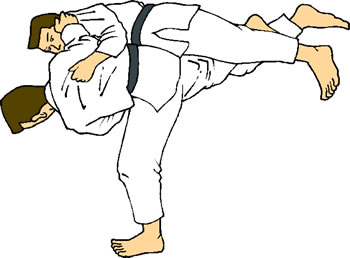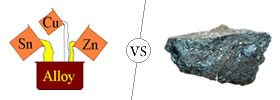Difference between Karate and Judo
Key difference: A key difference between Karate and Judo is that the latter is known for its grappling and throwing techniques, while karate is famous for its striking techniques.
.jpg) Karate is a term that is derived from the amalgamation of two words: ‘kara’ and ‘te’. Kara means empty and te means hand, both of them put together, i.e. karate essentially means “empty hand”. Further, if the suffix ‘do’ (pronounced as doe) which means “way” is added to this term, then the formed word, i.e. karate-do implies “a total way of life”. This is exactly the stature that karate has gone on to achieve, as people all over the world practice and preach it. People of all genders, ages, nationalities, etc. have recognized karate, and have taken to it as a widely accepted and privileged martial art form.
Karate is a term that is derived from the amalgamation of two words: ‘kara’ and ‘te’. Kara means empty and te means hand, both of them put together, i.e. karate essentially means “empty hand”. Further, if the suffix ‘do’ (pronounced as doe) which means “way” is added to this term, then the formed word, i.e. karate-do implies “a total way of life”. This is exactly the stature that karate has gone on to achieve, as people all over the world practice and preach it. People of all genders, ages, nationalities, etc. have recognized karate, and have taken to it as a widely accepted and privileged martial art form.
Having its origin in Okinawa, Japan, karate involves sharp and precise movements that heavily rely upon a person’s hand-eye coordination. A basic principle of karate is to make one’s body steel hard, so as to tolerate the impact of objects like bricks, wood, etc., and possibly go on to break them as well. Self-defense, combat, and physical training are some of the inherent values of karate. Karate is one of the most energetic forms of martial arts in the world today, with a variety of striking techniques such as punches, kicks, knee strikes, elbow strikes, etc. In many sub-forms of karate, techniques of grappling, throwing, joint-locking, restraints, etc. are also taught and implemented.
 Judo is another dynamic form of martial arts that originated in Japan. It was developed by Jigoro Kano in the year 1882. At the time of its origin, Judo was limited to being a sport, but as of the 20th century and the new millennium, Judo gained recognition as an Olympic sport, and a martial art form as well. The practitioners of Judo, i.e. those who undertake its training, are known as Judoka, while a Judo instructor is called as a Sensei. The Judokas have to dress in traditional Japanese attire known as keikogi, while performing or practicing Judo. A keikogi is basically a kimono, which comes fastened by a colored belt.
Judo is another dynamic form of martial arts that originated in Japan. It was developed by Jigoro Kano in the year 1882. At the time of its origin, Judo was limited to being a sport, but as of the 20th century and the new millennium, Judo gained recognition as an Olympic sport, and a martial art form as well. The practitioners of Judo, i.e. those who undertake its training, are known as Judoka, while a Judo instructor is called as a Sensei. The Judokas have to dress in traditional Japanese attire known as keikogi, while performing or practicing Judo. A keikogi is basically a kimono, which comes fastened by a colored belt.
Famous for its grappling and throwing techniques, Judo is practiced and taught as an art form in many countries of the world. The fundamental objective of Judo is to throw or takedown one’s opponent to the ground. For doing this, landing a series of strikes and thrusts on the opponent, by using one’s hands and feet is allowed in Judo. A participant is declared a winner only when his/her opponent is immobilized on the ground with a pin, or by using a joint lock or a choking technique. In Olympics, the participants have to observe strict adherence to the rules and regulations of this sport. Regular and appropriate penalties are attracted by participants who use illegal moves and space outside the designated area, to takedown and pin an opponent to the ground.
Thus, Karate and Judo are both martial art forms which have similar techniques, but they’re not all the same.
Comparison between Karate and Judo:
|
|
Karate |
Judo |
|
Type |
Karate can be termed as a hard martial art where are blows are landed on an opponent’s body. |
.Judo is a soft martial art mainly involving body maneuvers against an opponent. |
|
Purpose |
Karate is used for battering a man into submission. |
In Judo, a man grapples with, wraps or traps an opponent with the effort aimed at tiring down the opponent. |
|
Reward of points |
As a sport Karate involves earning points for kicking and punching. |
In Judo, points are awarded for grappling and throwing one’s opponent. |
|
Attack/Defense |
Karate is an attacking and aggressive form of martial art. |
Judo is purely a defensive form of martial art. |
Image Courtesy: fangraphs.com, smithtownjudo.com









Add new comment